Today’s episode features a great interview that really illustrates the power of art connection. I talk with Olivia Ollis, an art teacher of over 30 years living in rural North Carolina. Her experience over the last year has deepened her personal connection to works of art and helped her discover new things about herself in the process. She discusses her health obstacles recently and the museum program that’s helping her through it.
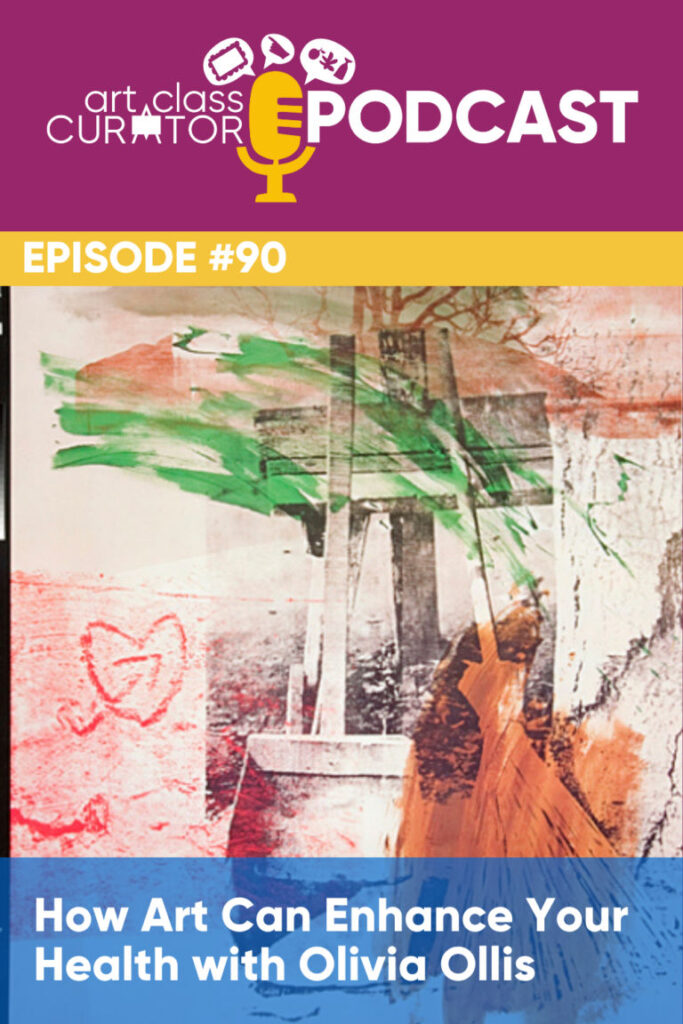
6:52 – Why Olivia wanted to teach art and how she got into the field
8:06 – A program at her local museum that’s helping Olivia through endometrial cancer
13:34 – Surprising things Olivia has learned about herself since starting the program
19:56 – How Olivia’s relationship with art will change going forward
21:30 – The wonderful ways in which art has helped Olivia through her healing process
23:11 – The most powerful artwork in Olivia’s life right now
Be a Podcast Guest: Submit a Voice Memo of Your Art Story (Scroll to the bottom of the page to submit your story.)
Cindy Ingram: Hello and welcome to The Art Class Curator Podcast. I am Cindy Ingram, your host and the founder of Art Class Curator, and The Curated Connections Library. We’re here to talk about teaching art with purpose and inspiration from the daily delights of creativity to the messy mishaps that come with being a teacher. Whether you’re driving home from school or cleaning up your classroom for the 15th time today, take a second, take a deep breath, relax those shoulders, and let’s get started.
Hello everybody, it’s Cindy Ingram, and I am happy to welcome you to The Art Class Curator Podcast. I have a great interview for you today. It’s a little on the shorter side because this is actually going to be a two-part episode. We have the first part with Olivia Ollis. She is an art teacher in North Carolina. She has had an experience over the last year where she deepened her connection to works of art and has discovered a lot about herself in the process. She participated in a museum program that helped her through this and I also will be interviewing the museum educator who runs this program as well. That episode is coming as well to talk about it from the side of the person planning the program. But I really love this conversation with Olivia because it really does illustrate the power of art connection, and I know I talk about it all the time that you can learn about yourself through art. You can have deep connections, you can explore the emotions, the thoughts, and the feelings that come in works of art, and it can add value to your life. We want that for our students and that is really what I’ve been focused on in my career up until this point, is helping teachers make these connections so that their students can make these connections as well and that will ripple out into the world. But I have been finding more and more that I crave that deep connection and those deep conversations with people who are changing their lives through their interaction with works of art.
You’re going to see a change in this podcast. We are rebranding in a few weeks. Starting in January, we’re going to have a brand new name. It will be a slightly different focus for the podcast although the same things that I’m passionate about, you will see those come again and again. But these art connection stories, these conversations about art, and what we can learn about ourselves through art are giving me so much life right now after the last couple years of stress, refocus, and a re-understanding of who I am in the world. I think what the pandemic gave us—and I’ve talked about this before on the podcast—is that we had the chance to really survey everything in our life and everything that it got stripped down. Then we are now making these decisions on what we want to add back in. The thing that I want to add back in, the thing that I realized that I have been craving is deeper conversations and deeper connections. That is what I hope to have here on the podcast moving forward. I cannot wait to share that with you in a couple weeks.
We have decided to run the Art Connection Circle, which you heard about in my episode a few weeks back with Lisa Carpenter. We are going to start the new Art Connection Circle the week of January 17th. If that was something that you are really interested in pursuing and checking out, you can head over to artclasscurator.com/circle. The types of insights and inspirations that you will see in this conversation with Olivia today is what the types of conversations and connections that we hope to build together and co-create together in this Art Connection Circle. I hope that you join us. You can head over to artclasscurator.com/circle if you’re interested in checking out the program. We would really love to have you. Without further ado, let’s introduce Olivia Ollis, and hear her incredible story.
I am so excited to welcome Olivia Ollis to the podcast. Welcome, Olivia.
Olivia Ollis: Thank you. It’s wonderful to be here.
Cindy Ingram: You reached out to me last month in response to an email that I had sent to my email list and shared your story of how you have been using art with your health journey. I thought it was a really powerful email and a really powerful thing to talk about. I’m so excited that you’re here to share with us. Can you just introduce yourself, tell us about your background and experiences before we get started?
Olivia Ollis: I am a K-8 Art teacher. I have taught for over 30 years and I live in a very rural part of Eastern, North Carolina. But I am close to the North Carolina Museum Of Art and I’m close to Wilmington, the Cameron Museum Of Art. I can travel where I need to go. I’m not completely and totally isolated. Sometimes it’s nice. Art has always been an important part of my life but whether through my parents, in their medical journey and now, my most recent medical journey with cancer, art has been very important in healing and coping.
Cindy Ingram: Yes. Before we start to talk about your connection with art and healing, can you tell us a little bit more about your classroom? What kind of projects do you like to do? What does your classroom look like?
Olivia Ollis: I have a wonderful classroom. I teach at B. F. Grady Elementary in Albertson, North Carolina in Duplin County. I teach K-8, which is a wide span of ages and I am constantly, with my students saying, “All right. Give me a minute. I don’t mean to talk to you like kindergartners. I just had kindergarteners, wait a minute. I’ll get to fifth grade, be patient with me.” We do all sorts of things but I feel like it’s very important that we integrate the arts into subject matter. One, it helps me because those who are not quite as interested realize, “Oh I heard that before, this is important,” and also the teachers buy in. It also helps strengthen and support the teachers in what they’re doing, it just makes life more interesting. As I tell them, artists pull their ideas from all over the world. We’re going to pull our ideas from all over the school, everything you’re learning. We go on virtual field trips but also we’ve done field trips. I bring artists in to work with the students so they understand that particular process that the artist goes through and it enriches them, also enriches the teachers. I try to have a balanced art appreciation, creating art, making art, looking at art. We have fun and we make a mess but everybody seems to understand that’s okay.
Cindy Ingram: It’s beautiful. What made you want to be an art teacher? How did you get into this field?
Olivia Ollis: I had always enjoyed art. I remember being really little and painting with watercolors on pieces of cardboard, I was always allowed to dabble. I really didn’t know what I wanted to do in college and I took an elementary art course for classroom teachers just trying to figure out what I wanted to do. The art professor said, “You’re teaching the class so you’re going to be an art teacher,” and I just said, “Okay.” I have really enjoyed it. Now, yes, there are ups and downs but I have really enjoyed it. One thing about being an art teacher, at the end of the day, you have been working with shapes and first graders, cutting shapes and free form, and all sorts of things and you can, at the end of the day, sit back and you look at those ridiculous turkeys where they learned to make a cube and then they converted it into a turkey. Some are screaming, yelling, and losing their feathers like some of the children, some are very quiet and contained. It’s just hysterical. I have enjoyed it.
Cindy Ingram: Yeah. There’s never a dull moment. There is always a funny story at the end of every teaching day. That’s such a great joy. Tell us about what’s going on with you now with your cancer and introduce us to that story.
Olivia Ollis: Starting last spring, I began to have some problems, immediately went to the doctor who sent me to another doctor, who sent me to another doctor, and it went into surgery, chemotherapy and radiation. I had a wonderful support team for my resource team at school, family and community. I felt really good about it and this is all going to be fun. I tried being in the classroom but it just did not work. I was too weak. It just did not work out. I felt it was important that the kids see me there and I’m fighting through it and everything. It’s going to be fun, particularly with the pandemic and all that has occurred, but it just wasn’t happening, so I’m home doing lesson plans like trying to keep up with everyone and that’s fun, but I think they all understand that. But I was diagnosed with endometrial cancer, had surgery, then I had three rounds of chemotherapy, five weeks of radiation. Then I’ve had one more round of chemotherapy and I have two more to go. Then I’m expecting all the scans to be clear, have a great new year and gradually get my strength back. I will be back in the classroom on the 1st of January. I’m looking forward to everything getting back on a normal schedule.
But the Cameron Museum of Art in Wilmington and the medical center and the Zimmer Cancer Center which is part of that, had this program called Art Enhances Health. I jumped at it because I kept hanging on to my art, looking at art, connecting with museums and images and everything I was trying to do to reach out, to take care of me because there were things I could not do but there were other things I could focus on. I could find some calm, some peace, some distraction in that. This was a wonderful program, as I say, everyone who is a part of it, who signed up to participate and we’re at the Cameron, we’re all in the same storm, we’re in the same harbor at the Zimmer Cancer Center and we’re all in different boats but that’s the same. But we all have a desire and appreciation to learn more about art and we start in the gallery.
Then we do writing exercises, which is a good way to explore between the gallery and how we’re feeling. I love the fact that the person who is leading the writing said, “Okay, now you can burn these if you want to,” so we can put down whatever we want and then we can destroy it if we want to hang on to it. That has been really good because I’m not a writer—visual person but not a writer, and that’s been good. Then we actually do hands-on art activities. Then we take ideas from what we’ve written, what we’ve seen. We’ve done collage, we’ve done drawing, painting. We’re just having a good time, we’re laughing, and that’s the best distraction, I think, of all, of being able to leave some of the worries and concerns and you’re not feeling well. It seems to be going on forever to find some sense of peace, hope, and happiness.
Cindy Ingram: That is so beautiful. I have not gone through such a situation but I can imagine everything that you would think, the community of people around you that are also going through what you’re going through, the opportunity for self-expression, and a deeper relationship with yourself. Then the distraction, the joy and the fun of it, like all of that wrapped into one package in the creative expression, did I say that one? I think it did, but that’s really wonderful. Do you meet every month?
Olivia Ollis: We meet once a week, on Mondays, and then the museum is closed. We meet for two hours. This way, we aren’t encountering the public. We all wear masks, social distance and everything, but we’re not putting our health further in jeopardy by coming into contact with other germs. It’s wonderful that the museum has extended that, working with the hospital in meeting these guidelines. We meet for two hours. We meet once a week and then we all understand that there was a day I couldn’t be there because of chemotherapy treatment. There are days others can’t for different reasons. I think we can also look and recognize, we’re so glad to see each other and we’re glad to be there. We can recognize who’s not quite feeling quite as well but everybody has something to contribute. It’s a very slow pace. Having been in the classroom, you’re always up against the clock and trying to get things done, this is much more relaxed and it’s for six weeks. I think this is a beginning because we’ve had people also from, I believe it’s public health within the hospital system and they’ve done surveys and things. They have also been there. I think this is a learning experience for all of us but I think it’s extremely valuable. It’ll be interesting to see how it comes out; I know that for me, to continue to have the opportunity to look at art, to share opinions and think about things. Plus, I’m finding that as I look at art or I’m creating art, I’m writing about art, there’s also a part of me that’s reflected. I’m learning more about me.
Cindy Ingram: Yes. Can you speak a little bit more about that process of learning about yourself through the art or provide an example or just to illustrate what that means for you?
Olivia Ollis: One type of writing was legacy writing and what do I want to leave from this experience, or take from this experience, or what do I want others to notice from this experience is something that people have said that really resonated with me but I was really surprised that I’m so positive. “Oh, really?” I thought. I don’t think of myself that way. I thought of, going back as I’m also an artist, my drawings that I did after my father died, my mother had Parkinson’s and they were very revealing to me of—I realized what was important and what was going on in my life and I don’t know that I would have thought of them as necessarily positive—but my work that I’m doing in class I’m writing, apparently, has more positivity.
One of the things also with affirmative writing, what’s important, what’s positive, what’s your safe place, your happy place and I realized my front porch was my happy place. Being in the middle of nowhere, it’s wide open and swings on one end, it runs the length I can walk to the other end. Of course, now all my plants are dying because I have not been able to take care of the thing but that’s okay. But my collage was very bright, cheerful, happy, and warm. It’s really interesting how you find those things or things that I really hadn’t thought about come up in the writing and I realized, “Oh, I’m stronger than I thought I was.” It’s been very revealing. One particular piece at the museum in the collection that we saw, I needed to have prints, and I believe it’s the building gallery. I think it’s the—and you’ll have to help me here, I can’t remember—it’s Sonia Delaunay, her bright, colorful prints, and I really needed to see those bright moving colors that day. Then another day, there’s a Rauschenberg and it’s all different grays. But there’s this broom and it’s sweeping. I thought I need to sweep things out of my life. I need to make room so I have more space for me. I’m accustomed to being overwhelmed with K-8, family, dogs, and all that. I can’t quite separate that from, “This is my time alone but that’s okay,” but I can clear things out. That was something that until after looking at it, thinking about it, we discussed it and writing about it, I didn’t realize, “Oh, that’s what I need to do.”
Cindy Ingram: Yeah. Oh, you just gave me chills head to toe. I love that. I just wanted to highlight just a couple of things. You discovered about yourself that you probably assumed—never deliberately thought of your safe space but then you also did so in a community and people reflecting their views of you back to you. You’re seeing yourself through a new lens and I was surprised to hear that you didn’t see yourself as positive because I’ve only spent, I don’t know, 20 minutes with you now then an hour last week or two weeks ago, and I was like, you just radiate this positivity, this love energy. I love that you got to see yourself through other people’s eyes too. That’s beautiful. Then you also got to feel all the range of human emotions in connection with the art, that safe space of a work of art and how it can be there for you wherever you’re at that day. I think that is really powerful. In this program, is this your first time to ever really spend time looking at art in this way for yourself?
Olive Ollis: I’ve done that some. At one point in time at a different phase in life, I love to go to the North Carolina Museum of Art like New Year’s eve and spend time and go back. I said, I would go back and visit old friends. I’ve always enjoyed looking but it’s on a much deeper level. I don’t know if that’s because I try, always when I’m in the classroom, working with the kids, we start with a work of art, visual thinking strategies, look through and thinking through. It’s not whether you like it or not, you got to tell me why and what the evidence is there, helping them look and then produce art. Whether I was already accustomed to that, but here it’s for me, and that’s been extremely important. Art is all. Looking at art has always been important but this is a little different meaning, and a lot of times, I can find peace there where I guess I wasn’t looking for before but now I can find it there.
Cindy Ingram: Yeah. Oh, that’s beautiful I think I’ve noticed that teachers—and I’m guilty of this too, for a while I would go to art museums and I would spend all my time looking at the art through the eyes of how would I teach this, how would I show this to my students, is this a good example of this particular topic, or what activity I can do with it, or I would be thinking about the website, I’m like, “Oh, I could do an email about this.” Then suddenly one day I was like, “I need to just put my phone down, turn my brain off, and just experience the art for itself.” That’s when the true magic happened when I allowed myself to let it be for me and for no one else.
Olive Ollis: One thing I found with the kids is if I put myself aside and listen to what they’re saying, a lot of times, they come up with things that I hadn’t seen before that is amazing. But it is hard to put that teacher hat over to one side and to really listen to what they’ve seen, what they found.
Cindy Ingram: Yeah. I love that you get to do this in this program with other people and you get to be the student. You don’t have to worry about facilitating that conversation that you get to fully engage.
Olive Ollis: I enjoyed not being the art teacher.
Cindy Ingram: Yes. You don’t have to clean up and you don’t have to plan it. You don’t have to cut the paper in advance. You just get to enjoy it. How do you think this will change your relationship to art moving forward?
Olive Ollis: Good question. I think one thing for me as an artist will be that my work is going to change. Where my drawings have been, they’re what I call fragmentations. They’re bits and pieces of drawings that go together to make whole drawings that also separate and make images but they’re controlled, simply because I have the time, I can get one little teeny tiny drawing done and I’ve accomplished something. Where now, that’s not as important as loosening up the whole image, the energy, or warmth, or whatever strength that I have found it contains. My personal work will change, but hopefully, I am going to help the students find more meaning as we look at works of art and they look at their own art because that’s so powerful to me. I feel particularly with the stresses of today, and many being we are in a rural area and there are many influences and problems that we have that you don’t have in a big urban area, the same thing is reversed, to hopefully help them learn to find a way to help deal with things by looking at art. If they get that chance to travel to go to that museum as their life expands, they have more opportunities, they have that confidence to go on and do that. Hopefully, I can give them that.
Cindy Ingram: I love that. I think you might have already answered this but maybe if there’s anything else you can think of, how has art, this experience with this program and just art in general, helps you through your healing process?
Olive Ollis: I’m not as focused on me. It would be very easy to be overwhelmed, between overwhelmed with the bills, between overwhelmed with trying to sit with the dictionary, to find the words, learn all the medical jargon and the knowledge to not look too far forward. No teachers were planning for the year or the two years or whatever we’re planning ahead. I don’t need to plan too far ahead right now. I have to get through this treatment, then this treatment, I have to give my body a chance to rest and recover. It helps me see a new perspective, not get dragged down and bogged down in depressive thought or dark thoughts or worrying about the fact that the money that I can’t control, the health insurance and all that goes along with it. I’m very fortunate, my daughter took a leave of absence from grad school to take care of me because I’m in a rural area, I have to drive everywhere. She’s driving me and she has gotten me to the museum because she understands this is my mental health day. This is extremely important to me. It’s been a very valuable experience to help me stay focused on what is important and not get overwhelmed and bogged down particularly, when you’re not feeling well. It’s really easy to get overwhelmed. Plus, as I said, I can see others who are also going through the same thing, and it is wonderful works of art where I can lose myself.
Cindy Ingram: I love that. That’s beautiful. Thank you so much for sharing that. I’m going to ask you the last question which I ask every guest that I interview on my podcast and that is which artwork changed your life?
Olive Ollis: I would have said someone else, but now I think the Rauschenberg prints with the broom sweeping, meaning I have to make room for me. I think that has, perhaps, been the most powerful right now. There have been others throughout different periods of time but right now, I would say that particular print, with that broom—and I am not a housekeeper—but in that motion of sweeping, I need to move and clear things out.
Cindy Ingram: Can you describe your initial reaction to the artwork? Did you initially feel that tug to the artwork or did you arrive at it after a little bit of time?
Olive Ollis: The art in me had to go all the way around the gallery and look at all the different prints. I immediately liked that one because I like the motion, but I had to go and look at everything first. I actually went to the Sonia Delaunay because I really, on that particular day, needed those bright dancing colors, but I went back to the gallery, looked and I realized after the writing, “This is what I need to do.” I don’t know what Rauschenberg’s thought was but that’s okay. He had his own agenda, but mine, I need to get moving, sweep the stuff out, and clear more space for me.
Cindy Ingram: I love that because a lot of times, people are expecting to have an initial jolt of like, “Oh, this is the artwork.This is the connection,” but sometimes it’s a really slow burn. Sometimes you’ll see the artwork four times before suddenly something about it hits your life with just the right artwork at the right time and the right process. You were giving yourself and the artwork space to create that meaning together, and I love that. It’s a good lesson.
Thank you so very, very much for joining me today on the podcast. I hope that museum educators around the country are going to be inspired by this program and start ones of their own. Then I hope that you also give some hope and ideas to people going through what you’re going through to connect with art in new ways. Thank you.
Olive Ollis: Thank you, and it’s been a pleasure talking with you. If you ever get to North Carolina, you should visit the North Carolina Museum of Art, and Wilmington, the Cameron Museum of Art.
Cindy Ingram: I definitely will.
Olive Ollis: Besides the long rural spaces that are quiet.
Cindy Ingram: Okay, everybody. That is it for today’s episode of the Art Class Curator Podcast. Like I said in my intro, we will be hearing from the Cameron Museum of Art who put on this program that Olivia discussed. We will have an interview with them in a coming episode. I’m so inspired by this conversation with her and I hope that you are too. If you do have an art story of what art means to you, what an insight that you learned about through art, a powerful moment that you’ve had in connection with works of art, I would love to talk to you about your story either as an interview, or you can send me a voicemail about your experience and I can add it into an episode. You can leave us a voicemail at 202-996-7972. You also can send me an email to cindy@artclasscurator.com. If you’re interested in being interviewed about your art connection experience, this is something I am so passionate about and I can’t wait to have these conversations with you moving forward as we rebrand the podcast in the next coming weeks. Once 2022 hits, you will start to see the new unveiling of our podcast. Thank you so much for listening. I hope you have a wonderful holiday season and I hope that you take some time for yourself—if you have a break in the next coming weeks—to visit an art museum and check out some art. Okay. Have a good one. Bye.
Do you remember when you last took time just for you? Not for your students, not for work, not for your family or friends, just you? Connecting with your deepest thoughts, emotions, and desires. It seems like there will always be a hundred things on the to-do list, and bone-deep exhaustion that makes it feel like doing anything but scrolling in your phone is impossible. You’re here listening to this podcast because you know the power of art. But trust me when I say art has so much more to give you if you’ll let it. I’m talking about making space for you—your insights, your memories, your delight—all by using art as a catalyst for a deeper connection to yourself and your life. You can get a guide on how to nurture your life and your spirit through art connection including a guided art meditation all for free at artclasscurator.com/meditation. Take the time to connect with your deepest self and find your path forward through art. You deserve it. Get your free meditation and guide at artclasscurator.com/meditation.
Thank you so much for listening to The Art Class Curator Podcast. If you like what you hear, please subscribe and give us an honest rating on iTunes to help other teachers find us, and hear these amazing art conversations and art teacher insights. Be sure to tune in next week for more art inspiration and curated conversations.
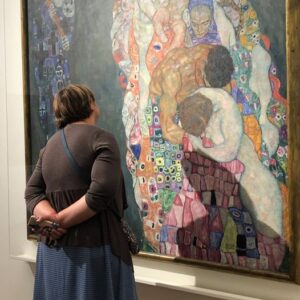
Free Audio Download
Art Connection Meditation
In this free meditation, take the time to connect with your deepest self and find your path forward through art. Get your free meditation here.
Subscribe and Review in iTunes
Have you subscribed to the podcast? I don’t want you to miss an episode and we have a lot of good topics and guests coming up! Click here to subscribe on iTunes!
If you are feeling extra kind, I would LOVE it if you left us a review on iTunes too! These reviews help others find the podcast and I truly love reading your feedback. You can click here to review and select “Write a Review” and let me know what you love best about the podcast!


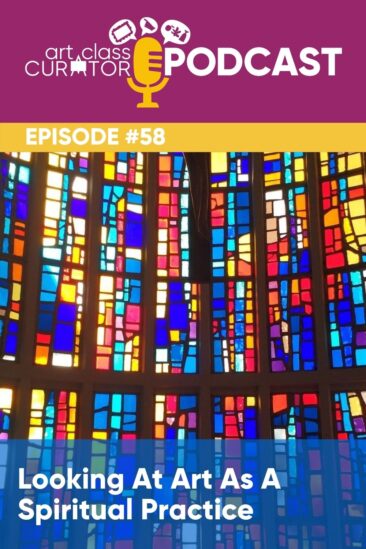
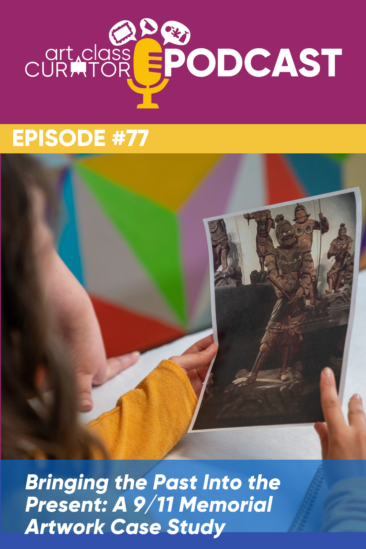
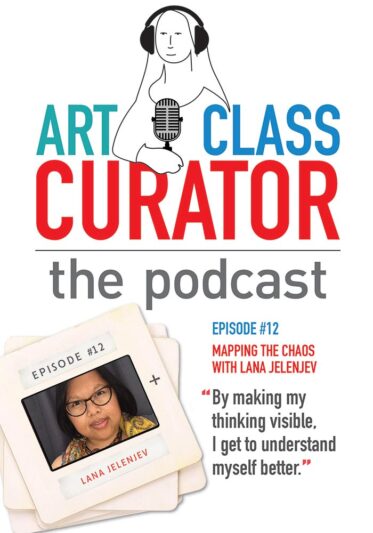
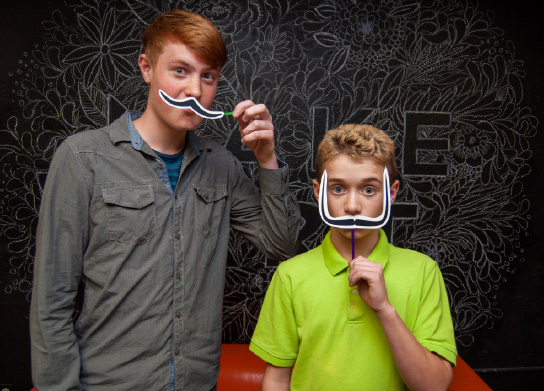
Leave a Comment